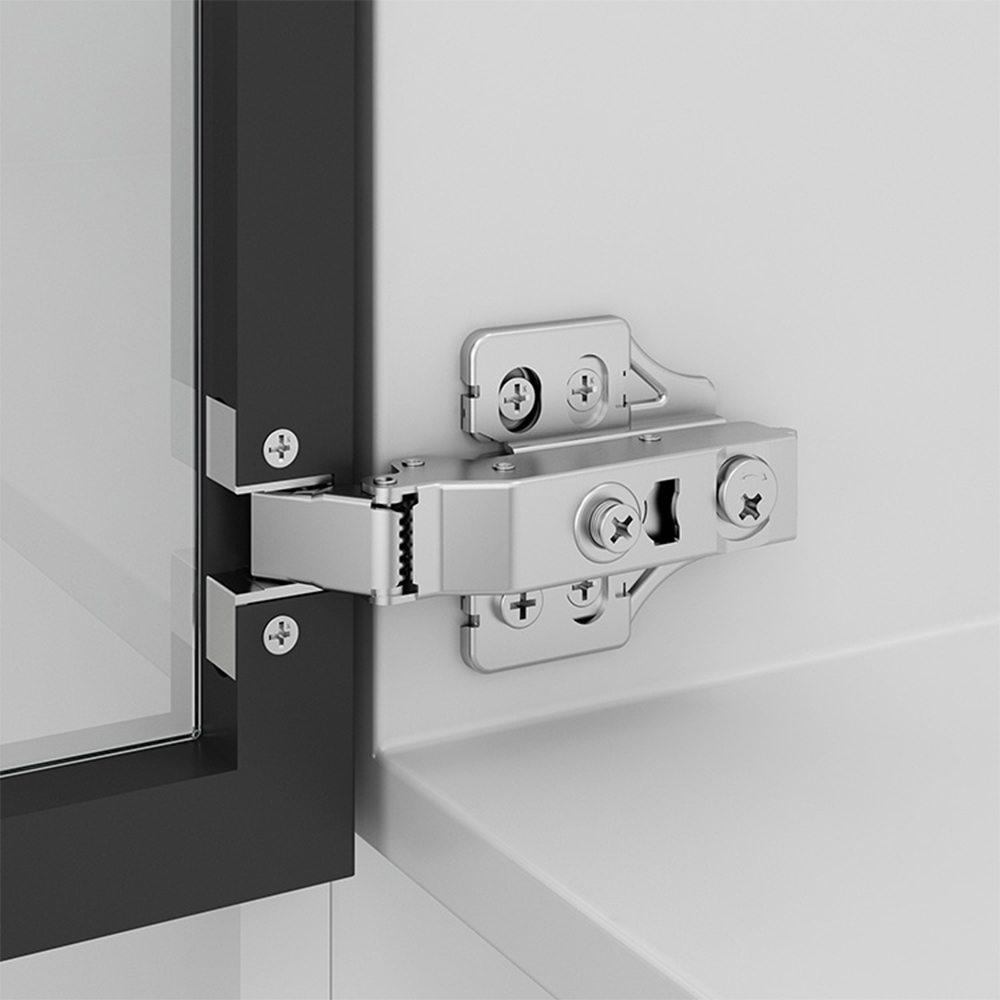In cabinet design, the choice of hinge styles can greatly affect the appearance and functionality of the cabinets. Inset cabinet hinges are renowned for their sleek and smooth appearance as well as reliable performance, making them one of the most exquisite and popular choices in high-end furniture and custom cabinets.
What Are Inset Cabinet Hinges?
First of all, let's take a look at what inset cabinet hinges are. Inset cabinet hinges are specially designed for built-in cabinet doors and are completely flush with the cabinet frame.
These hinges come in a wide variety of types, including concealed (European-style) hinges (hidden when the door is closed) and exposed hinges or hinges (partially visible and can serve a decorative purpose). Which one to choose depends on your design preference and the number of hardware items you wish to display.
Design Benefits of Inset Cabinet Hinges
Smooth Embedded Appearance: A notable feature of inset hinges is the seamless embedded appearance they offer. The cabinet door fits perfectly with the frame, creating smooth and continuous lines.
Design Diversity: Inset cabinet hinges can complement various design themes. For instance, retro-style flat hinges are ideal for classic or farmhouse-style kitchens, while hidden hinges can seamlessly blend into modern minimalist designs, minimizing the waste of visible hardware.
Durability and Longevity: As the inset hinges are installed within the cabinet structure, they can evenly distribute weight and reduce the pressure on the door over time. This contributes to long-term durability and stability, especially when used in conjunction with high-quality hardware.

Installation Tips for Inset Cabinet Hinges
Here we introduce several installation tips for inset cabinet hinges to help you achieve a perfect effect.
Choose High-Quality Hardware: Cheap or poor-quality hinges will sag or misalign over time. Purchasing high-quality hinges, such as those from KEA, can ensure their long-term durability and maintain the high-end appearance of the cabinets.
Precise Measurement: The success of installing embedded cabinet hinges largely depends on strict tolerances. You should carefully measure the dimensions of the door opening and the door, and reserve sufficient space to ensure that the door can open and close smoothly.
Use Appropriate Tools: The installation of built-in cabinet hinges requires suitable tools; otherwise, it is easy to cause the cabinet doors to open and close unsmoothly or have uneven gaps. For example, hinge fixing devices or drilling templates can ensure the consistency of hinge positions.
Dry Fit Before Final Installation: Before fully tightening the screws, be sure to temporarily fix the hinges first and check if the doors are aligned. This step can be fine-tuned to ensure that the door is completely flush with the cabinet frame.
Adjustment and Fine-Tuning: Modern inset cabinet hinges typically support three-way adjustment (up and down, left and right, inside and outside). Make full use of these adjustment functions to achieve uniform spacing and smooth opening and closing.
Conclusion
Inset cabinet hinges feature a simple, built-in appearance, outstanding functionality, and long-lasting durability. Although the installation accuracy of inset hinges is higher than that of covered hinges, their advantages are beyond doubt. Whether you are customizing cabinets or upgrading individual pieces of furniture, understanding and correctly installing inset hinges can help you achieve truly professional results.